
African History
African history ,Culture ,Food , traditions ,Music
TikTok : afri.canhistory
Recent Posts
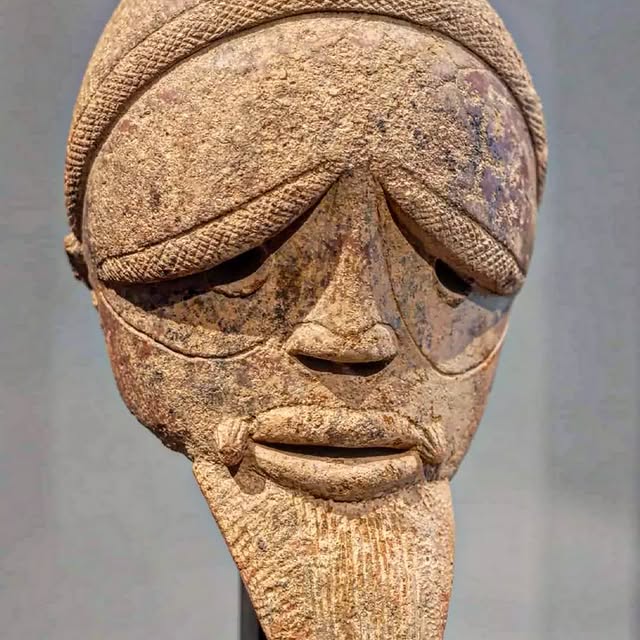
Sokoto terracotta, northwestern Nigeria, c. 500 BC to 100 BC. The ancient terracottas of the Sokoto area are largely contemporaneous with the more famous Nok terracottas to the southeast, but form a distinct corpus of works, indicative of an ancient culture of which we know very little today. Out of the hundred or so Sokoto pieces catalogued, most are isolated heads, mainly male, and which originally belonged to larger statues representing standing figures. Via africanhistorychannel #terracotta #sculpture #art #ancient #Antiquity #Sokoto #Nigeria #Africa #history #AfricanHistory
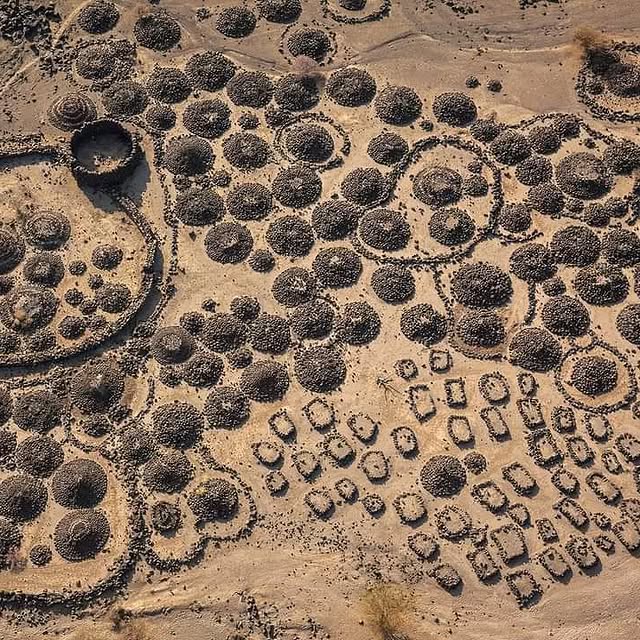
A traditional Afar cemetery near the inland Awash River Delta in Ethiopia. Photograph by George Steinmetz. Tens of thousands of tumuli dot the the landscape of the Afar region of Ethiopia. These tumuli or cairns, are stone burial mounds, referred to as “wadils”. They are huddled together in stone villages of the dead, known as “qabri”. Fallen warriors would have larger and taller mounds, which featured rows of stones indicating the number of kills the warrior had racked up in his lifetime, with some of the graves having dozens such stones. Some of these graves are quite recent, while others are a lot older. Some may even date back to the Late Stone Age, when a vast neolithic stone landscape stretched across the region during the last African humid period. Little is known about these sites as archaeological excavations in the region have been scant. #Afar #tumulus #tumuli #cairn #graves #tombs #Wadil #Qabri #aerial #Ethiopia #Africa #history #africanhistory
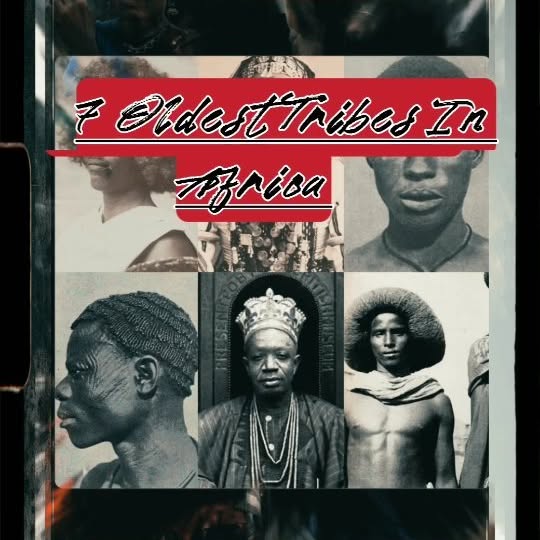
Many indigenous African tribes are believed to be direct descendants from the earliest human groups as they have unique DNA markers, genetic features, as well as languages that experts say are unlike anything that currently exists today. At least seven of these ancient tribes exist today and out of the few that are left, at least two of the world’s oldest tribes and people can be found in the southern region of Africa. #history #historyinpictures #historyfacts #historymade #historybuff #historynerd #historygram #historymakers #historymatters #historyplace #africa #african #africanceremonies #theafricacenter #africatwin #africanamericans #africanart #africanbeauty #archeological #archaeologist #archeology #oldest #tribes #blackhistory #historic #tuareg #maasai #kenya #sahara #
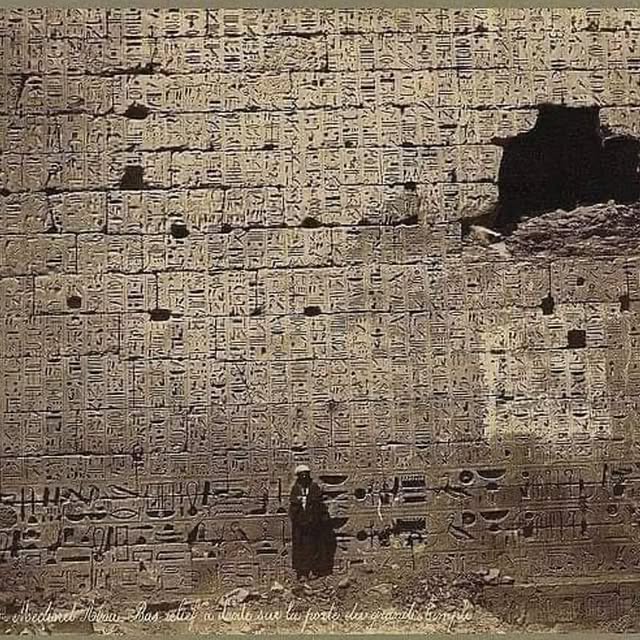
A local Egyptian guide standing in front of hieroglyphics on the Great Temple, Medinet Habu Site, Egypt, from a photo taken after 1867 and before 1899.
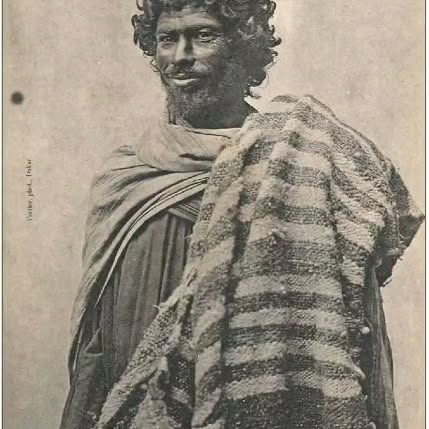
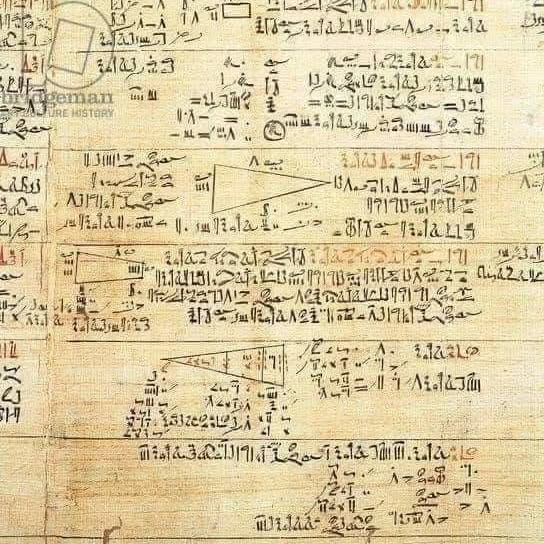
Many are curious about how the ancient Egyptians managed to construct the pyramids using intricate mathematical calculations. The Papyrus of Ahmose, also known as the Mathematical Rhind, is the oldest known manuscript featuring algebra and trigonometry. Its origins trace back 1500 years before the time of Christ, roughly 3500 years ago. This manuscript reveals that the Egyptians were proficient in employing first-order equations and had various methods to solve them. They were also well-versed in quadratic equations, adept at solving them, and familiar with numerical and geometric sequences. For instance, they were capable of handling equations like: X2 + y2 = 100, Y = 3/4 x, where x = 8, y = 6. This equation serves as the foundation of the Pythagorean theorem, a2 = b2 + c2, and in Egyptian terms, the unknown number was referred to as "koom." Also nwe should note that Pythagoras developed his mathematical theories after a visit to Egypt, where he learned from Egyptian priests. This historical fact has been substantiated by Greek historians and scholars like Farpharius of Sour, Herodotus, and Thales. Remarkably, the Egyptians had mastered algebra, trigonometry, and geometry approximately 2,000 years before Pythagoras was born, and even around 3,000 years prior to the birth of al-Khwarizmi.
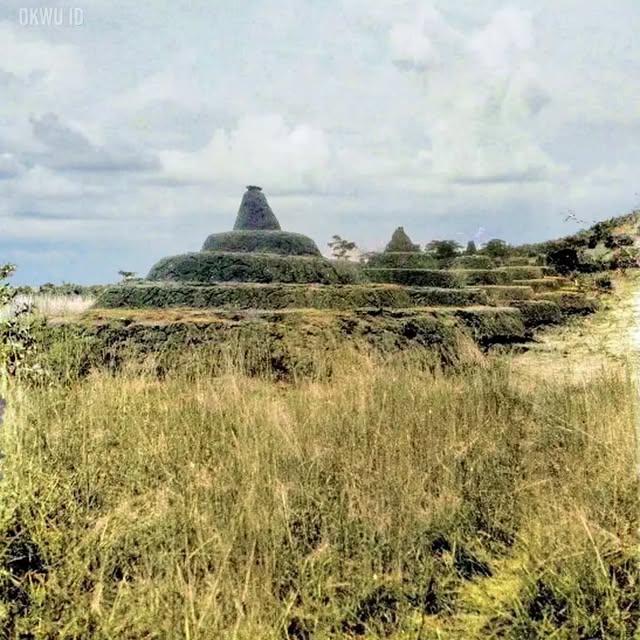
The Nsude pyramids of Enugu, Nigeria, represent a fascinating but mostly forgotten part of Black Africa's cultural heritage. These pyramids, constructed with hardened red mud and clay, once stood proudly on the Udi highlands of Enugu state, serving as a testament to the region's cultural richness. However, they gradually fell into disrepair in the 20th century, and today, only faint outlines remain. What do you know about the Nsude pyramids, their possible origins, and the reasons behind their decline? Historical accounts suggest that the Nsude pyramids were initially constructed as surveillance structures. Placed strategically in the highest altitudes of the community's boundary villages at Umuaka and Ugwuto, these pyramids were believed to provide surveillance against hostile neighbors during inter-community wars. The surveillance theory is plausible given the community's historical involvement in conflicts with neighboring communities. Another theory attributes the construction of the pyramids to the memory of Uto-Nsude, a revered war hero who later became a deity in the community. While this theory lacks concrete evidence, it highlights the significance of these structures in local folklore and spirituality. There is also a less credible theory suggesting that the pyramids may have served as furnaces for iron smelting. However, historical records do not strongly link the Nsude area to iron smelting activities. The discovery of these pyramids by Europeans occurred during extensive geographical surveys and explorations in the Udi hills. The first recorded discovery was credited to Luke Walter, a British explorer, in 1891. Unfortunately, Walter's documentation of this discovery remains elusive, possibly because he didn't consider it historically significant. It wasn't until 1935 that G.I. Jones, an anthropologist and colonial administrator, captured what may be the only surviving photographs of the Nsude pyramids. These photographs were kept private until recently when they were published, shedding light on this historical monument. Over time, these pyramids fell into disrepair due to neglect and the erosion of their protective mud coatings. #pyramid
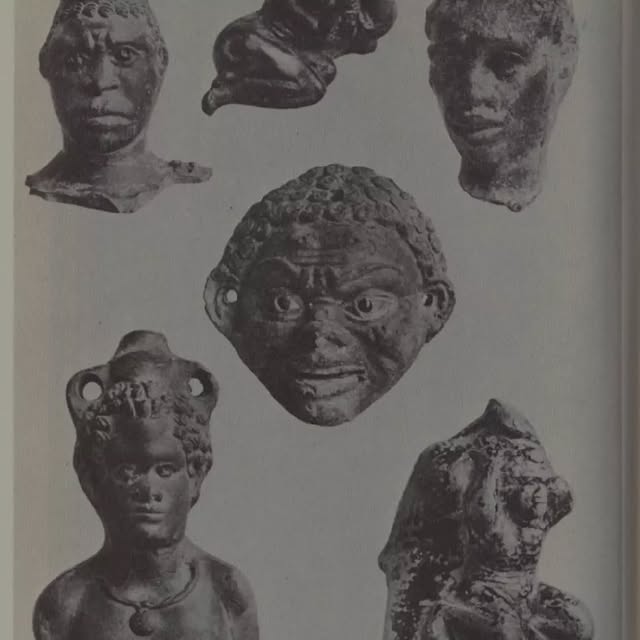
Greco-Roman Acquaintance With African. Ethiopians Of All the Greek writers who visited Africa Herodotus is the first to whom we can turn for a substantial account of Ethiopians. He ascended the Nile as far as Elephantine and supplemented his personal observations by interviews with others who knew Ethiopia. His geographical knowledge, like that of many writers who followed him, leaves much to be desired. His picture, however, of black peoples living in various parts of Africa was important for its influence in molding the Greek image of Ethiopians not only in his day but later. Although Herodotus makes brief mention of Asiatic Ethiopians, it is clear that he was writing primarily about African Ethiopians, the most woolly-haired of all men 20 whom, together with the Libyans of the north, he classified as aboriginals of Libya. 21 Herodotus wrote most fully of the Ethiopians who lived south and southeast of Elephantine, where the area, he noted, began to be occupied by Ethiopians. 22 The information which Herodotus gave concerning the Ethiopians south of Elephantine includes the following: (1) The capital of all Ethiopia was the great city of Meroë, situated at a distance of approximately two months' journey from Elephantine, the center of an established religion, which despatched its armies in obedience to its gods; (2) Along the Nile about a two months' journey southwest of Meroë lived Ethiopians influenced by the customs and manners of the 240,000 Egyptian deserters, called Asmach, who had migrated and settled in the region in the reign of Psammetichus I; (3) The Macrobian Ethiopians, the tallest and most handsome men on earth who chose the tallest as kings, against whom Cambyses made an expedition, dwelt on the sea to the south and lived at the extremity of the world; and (4) Cave-dwelling Ethiopians, the swiftest of men, whose diet included snakes and lizards and whose language resembled the squeaking of bats and was unlike any other in the world, lived south of the Garamantes. #history #grecoroman #history #egypt #african #Ethiopian
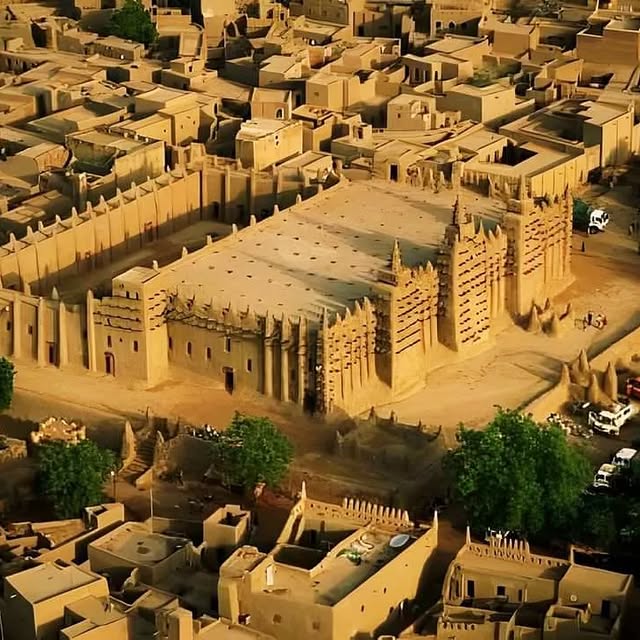
The Great mosque of Djenne 🇲🇱 The first Great Mosque of Djenne was built in the 13th century by Koy Konboro -- Djenne's first Islamicized ruler. As a vivid expression of his new-found faith, Koy Konboro had his palace destroyed, and the first Great Mosque built in its place. For six centuries, this massive mosque, comparable in size to the current Great Mosque, dominated the center of the town. By the 19th century, however, political and ideological conflicts within the Inland Delta caused the abandonment of the old mosque, which fell into ruin, in favor of a more modest mosque identified with the fundamentalist Islamic warrior-king Cheikou Amadou and his influence over the town (built 1835). Photos, and even postcards, exist showing Djenne's first Great Mosque in ruins. However, in 1906-1907 the current Great Mosque of Djenne was built on the site of the first Great Mosque in the monumental Sudanic style and has ever since remained the visual symbol of the town. The current Great Mosque of Djenne stands with all but its western side well-removed from neighboring structures at the center of the town's marketplace. Beside it are monumental tombs of great Islamic scholars, including one of a former imam of Djenne who died in 1724. #africanhistory #mali #greatmosque #ancient

Ethiopians in Classical Mythology Homer tells us that the Olympians were fond of visiting the Ethiopians. Zeus followed by all the gods went to feast with the blameless Ethiopians. where he returned for twelve days. Poseidon also visited the distant Ethiopians to receive a hecatomb of bulk and rams.- At the end of the Iliad Iria informs the winds that it is not possible for her to remain but that she must return to the streams of the ocean in order to participate in a Sacred feast offered by the Ethiopians. Hence the goddess makes a special trip alone. The Homeric precedent of these Olympian Ethiopian consortia' and an image of pious just Ethiopians became so imbedded in Greco-Roman tradition that echoes are head throughout classical literature. Is there anything in Ethiopian annals that could have been the basis for such a classical image? Pertinent in this connection is the remarkable Stelle of the Ethiopian King Pinnkhi ca. 751-716 b.c.). This record of Piankhi'a conquest of Egypt found at Gebel Barkal shows the Ethiopian king scrupulously attentive to religious rituals ,respectful of the temples and gods of Egypt, unwilling to Deal With conquered princes who were Ceremonially unclean. chivalrous in battle, and moderate in his relations with the vanquished.' Official documents of course must always be regarded with caution but A. Gurdiner has observed. the "moral and intellectual atmosphere" of Piankhi's sentiments is vastly different and "behind the verbal expression we cannot fail to discern . . . a temperament which had also ingredients of a fanatical piety and a real generosity." There is sufficient substance in the stele to have given rise to talk about Ethiopian piety and devotion to the Gods. Pinnkhi's dates are rather late for reports of Ethiopian piety to have reached Homer' unless there was such a tradition predating Piankhi. Sufficient time however had passed after Piankhi's death to allow Herodotus to receive accounts of the Ethiopian achievement. And in fact Herodotus; is the first Greek author in whom we find somewhat detailed references in Ethiopian piety and justice. Herodotus wrote that Sabacos, of the Ethiopian 25th dy

Many are unaware of the role Kano state in Nigeria played in the successful moon landing of the Apollo 11 mission in 1969, where Neil Armstrong stepped onto the moon's surface. Being geographically located close to the equator, Kano has an advantage for space missions, launches, and communication. Kano was a ground tracking station in Project Mercury, the first space project of the USA ,the success of which inspired more ambitious projects like the Apollo Project that landed the first human on the moon. Russia also sent the first man to get into space ,Yuri Gagarin, to Kano [pic5) #spacetravel #apollo #kano #nigeria #space #HistoryPhoto

A.D. 394, the last known hieroglyphic inscription anywhere was written alongside a depiction of the Nubian sun god Mandulis inside the Gate of Hadrian on the Egyptian island of Philae. When the Romans conquered Egypt in 30 B.C., the country’s system of temples, which had sustained religious traditions dating back more than 3,000 years, began to slowly wither away. Starved of the funds that pharaohs traditionally supplied to religious institutions, priests lost their vocation and temples fell into disuse throughout the country. The introduction of Christianity in the first century a.d. only hastened this process. But there was one exception to this trend: In the temples on the island of Philae in the Nile River, rites dedicated to the goddess Isis and the god Osiris continued to be celebrated in high style for some 500 years after the Roman conquest. This final flowering of ancient Egyptian religion was only possible because of the piety and support of Egypt’s neighbors to the south, the Nubians. Philae lies just south of the Nile’s first cataract—one of six rapids along the river—which marked the historical border between ancient Egypt and Nubia, also known as Kush. In this region of Kush, called Lower Nubia, the temple complex at Philae was just one of many that were built on islands in the Nile and along its banks. Throughout the long history of Egypt and Nubia, Lower Nubia was a kind of buffer zone between these two lands and a place where the two cultures heavily influenced one another. Egyptians and Nubians being neighbors, intermarried shared cultural and religious practices. These were people who interacted for millennia.” From 300 B.C. to A.D. 300, Nubia was ruled from the capital city of Meroe. The Meroitic kings took a special interest in Philae, where the most important Egyptian temple dedicated to Isis was located. In part this may have been because the island had been significant to the Nubians for centuries. Even its ancient Egyptian name, Pilak, which means “Island of Time” or “Island of Extremity,” may have been of Nubian origin. And while many of the other temples on Philae were built by Egypt’s Ptolemaic kings, Greek rulers who held 👇🏾
Similar Influencers

ДОМАШНІ УЛЮБЛЕНЦІ | ВІДЕО | ГУМОР

Mimi

Marina | Content Creator | Lifestyle

BUNNYDAYOFF & EWENS NATIP

نمیرہ ایوب

Cool Chic Style Fashion

ivana kordic ———

Rida Amjad 🇸🇦🇵🇰

OLGA LUCIA CORTES

🇭🇰🇭🇰 MANDY 🇭🇰🇭🇰

Lauren Aid

ʙʀᴀɴᴅᴀɴ ʀᴀᴅᴇʀ: ʟᴏᴠᴇ ᴄᴏᴀᴄʜ & ᴍᴀᴛᴄʜᴍᴀᴋᴇʀ

Omoba Ola Joseph

Anna Silva | Lifestyle • Beauty • Fashion

#HopeNadya...

Melrose Rebeiro

Senuri Rupasinghe

David Elon - דוד אלון

Свобода слова🇺🇦

SKYLERR | Скайлер | Валерія Кудрявець

Мирослава Полатайко
Ліна Костенко 🇺🇦 (фан-сторінка)

БУЛЬКА🫧ТЮБІК❤️

Kseniia Mishyna 🇺🇦

Tharushi Kumarasinghe | Content Creator

Влучнослов

VOLKANOV | СПІВАК | АВТОР


Андрій Іванушко | Вірші | ЗСУ🇺🇦
